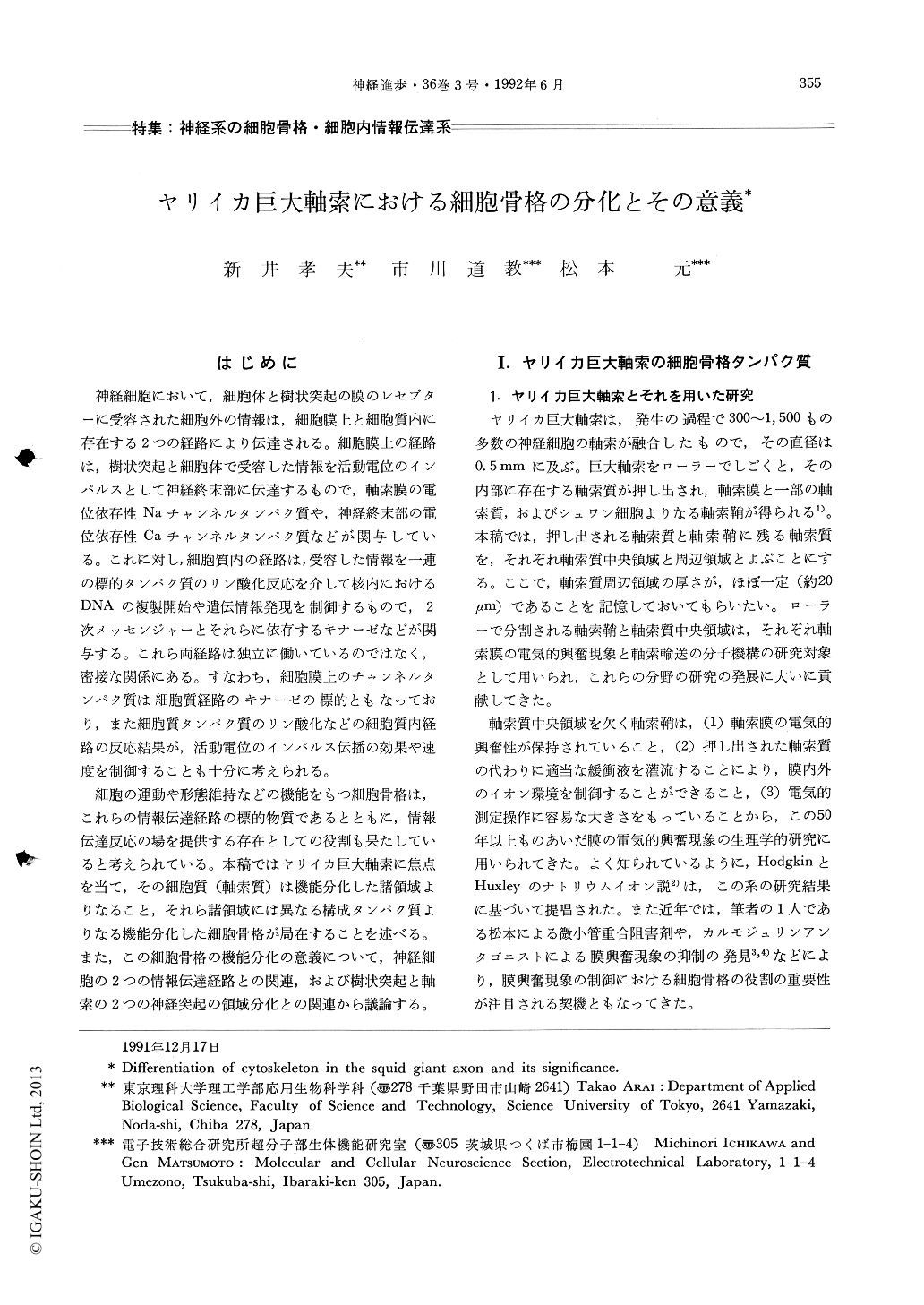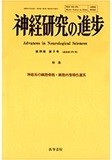Japanese
English
- 有料閲覧
- Abstract 文献概要
- 1ページ目 Look Inside
はじめに
神経細胞において,細胞体と樹状突起の膜のレセプターに受容された細胞外の情報は,細胞膜上と細胞質内に存在する2つの経路により伝達される。細胞膜上の経路は,樹状突起と細胞体で受容した情報を活動電位のインパルスとして神経終末部に伝達するもので,軸索膜の電位依存性Naチャンネルタンパク質や,神経終末部の電位依存性Caチャンネルタンパク質などが関与している。これに対し,細胞質内の経路は,受容した情報を一連の標的タンパク質のリン酸化反応を介して核内におけるDNAの複製開始や遺伝情報発現を制御するもので,2次メッセンジャーとそれらに依存するキナーゼなどが関与する。これら両経路は独立に働いているのではなく,密接な関係にある。すなわち,細胞膜上のチャンネルタンパク質は細胞質経路のキナーゼの標的ともなっており,また細胞質タンパク質のリン酸化などの細胞質内経路の反応結果が,活動電位のインパルス伝播の効果や速度を制御することも十分に考えられる。
細胞の運動や形態維持などの機能をもつ細胞骨格は,これらの情報伝達経路の標的物質であるとともに,情報伝達反応の場を提供する存在としての役割も果たしていると考えられている。本稿ではヤリイカ巨大軸索に焦点を当て,その細胞質(軸索質)は機能分化した諸領域よりなること,それら諸領域には異なる構成タンパク質よりなる機能分化した細胞骨格が局在することを述べる。
The squid giant axon has long been used for physiological and biochemical studies on the impulse conduction and the axonal transport because of its exceptional large size. The central axoplasm can easily be extruded with a tiny roller without loss of electrical excitability of the axonal membrane. The peripheral axoplasm, the axoplasm remaining in the axon obtained by the extrusion, was required for the membrane excitability and many transported vesicles were observed in the extruded axoplasm as in the intact giant axon. These facts suggest that the central axoplasm is functionally differentiated from the peripheral axoplasm.

Copyright © 1992, Igaku-Shoin Ltd. All rights reserved.


